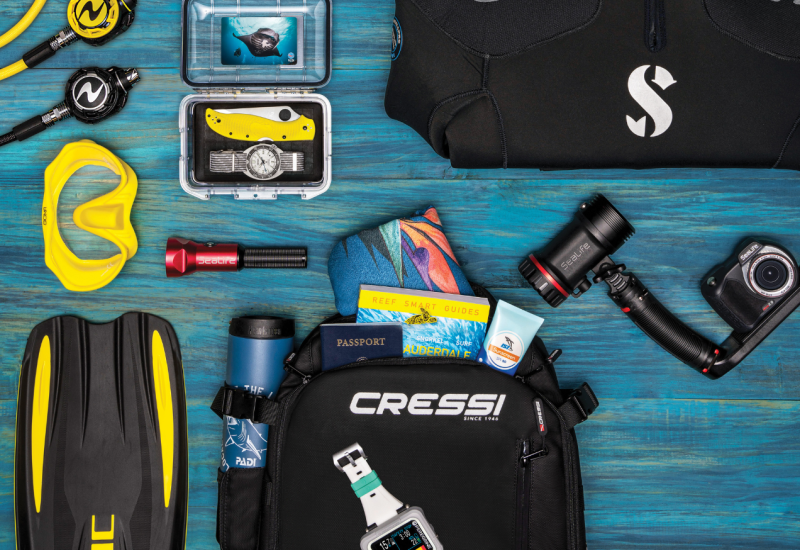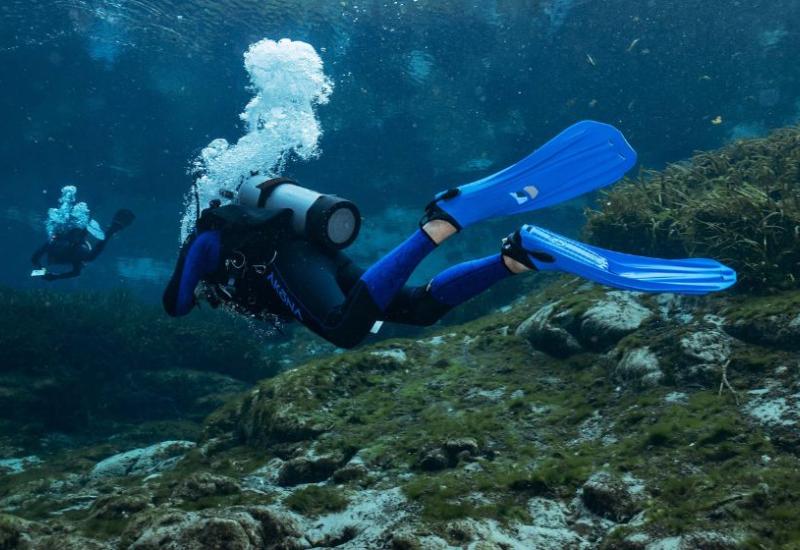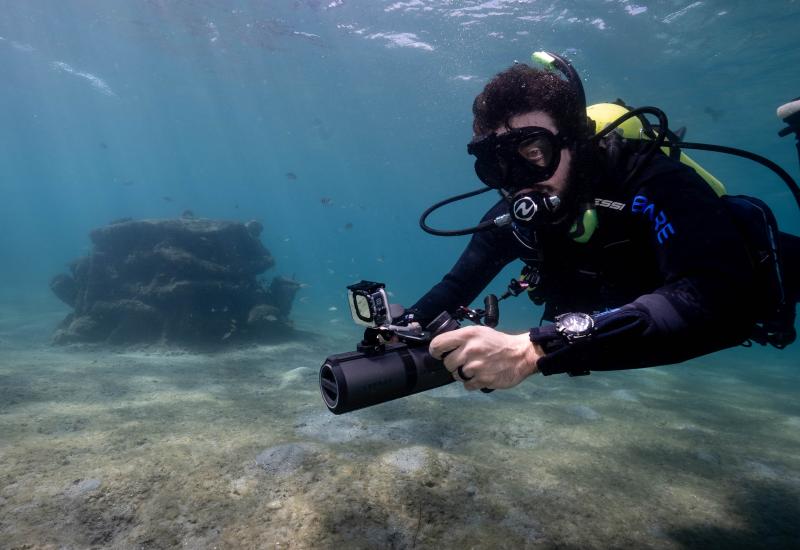Interview with Scuba Gear Designer Bill Oliver

Bill Oliver, Scuba Gear Designer for Sherwood
Courtesy of Bill Oliver
**At the Back of the Boat
**Interviews with Notable Figures in the Dive Industry
This month, we sat down with longtime scuba gear designer, Bill Oliver. Oliver is currently the Director of Product Development for the Sherwood Group and has been involved with the diving industry since the 1960s. Here, he talks about his work with Sherwood Scuba, the evolution of scuba gear and the future of our equipment.
Bottom Time: What made you want to become a diver? When did you get certified?
Bill Oliver: I was fortunate to grow up around the ocean. My parents lived in Key West, Honolulu and Southern California during my formative years. Swimming and snorkeling was always available to me, but I didn’t become a certified diver until my college years in 1965.
BT: What was the scuba gear like in the ’60s?
BO: The wetsuits were not nearly as comfortable or warm as they are today, BCs weren’t used, dive computers didn’t exist and the selection of masks were limited to just a few styles. Regulators were principally the same, but of course none breathed as smoothly as even the entry-level products of today.
BT: When did you first begin designing scuba gear?
BO: My first employment in the diving business was shortly after finishing college, and I started with designing regulators, but the position involved working with all aspects of scuba, military and commercial gear.
BT: As a gear designer, what are you most proud of?
BO: Over the many years I have been doing this there are many products with which I have had involvement. Very few products are the result of a single person’s efforts. I have collaborated on a wide range of products. Perhaps the product with which I had the most independent direct involvement was the Swimaster MR-12 II regulator. The operating principle that provides the breathing performance for that regulator is still in use today.
BT: What’s your favorite piece of scuba gear?
BO: It’s hard to say because I’m working with all of it. As far as development is concerned, I try to be a problem solver. My favorite item is the one I happen to be working on at the time. Of course, if you mean which is my favorite to use, much of it depends on what I’m doing. On a cold day, in cold water, the exposure suit certainly would be my favorite.
BT: Tell us about Sherwood Scuba’s history.
BO: Sherwood has existed as a valve-manufacturing company for more than 50 years and was a principal supplier to the industry as scuba began to grow in the early days. The natural extension was to develop regulators and then follow with all of the other gear we have come to depend on now. Although Sherwood has expanded its line to include a wider range of technologies and many manufacturing processes, its approach from the start has been to build gear that is easy to use and maintain, following the philosophy that simple is more reliable.
BT: On Facebook recently, one of our fans posed this question: What do you think will be the most innovative thing that will happen with dive gear in the future?
BO: For the recreational sport diver, the gear will continue to become lighter, more compact and easier to use both in the short and long term. In the beginning, everyone was a “tech diver,” but now diving activity has expanded in many directions, creating different needs and goals depending on what kind of diving you do. Tech divers will continue to innovate addressing issues that are special and unique to the tech-diving environment. Other specialties will do the same.
For the sport diver, the breathing equipment, buoyancy equipment and decompression monitoring (dive computers) all perform very well. The next challenge may be in finding a way to significantly improve underwater navigation. For the stationary diver this isn’t an issue, but for those who like to explore, something better than a compass would be a nice improvement.
Sherwood Scuba’s Magnum regulator was ScubaLab’s Best Buy in our most recent regulator testing. To see details, click here
_

Courtesy of Bill Oliver
**At the Back of the Boat
**Interviews with Notable Figures in the Dive Industry
This month, we sat down with longtime scuba gear designer, Bill Oliver. Oliver is currently the Director of Product Development for the Sherwood Group and has been involved with the diving industry since the 1960s. Here, he talks about his work with Sherwood Scuba, the evolution of scuba gear and the future of our equipment.
Bottom Time: What made you want to become a diver? When did you get certified?
Bill Oliver: I was fortunate to grow up around the ocean. My parents lived in Key West, Honolulu and Southern California during my formative years. Swimming and snorkeling was always available to me, but I didn’t become a certified diver until my college years in 1965.
BT: What was the scuba gear like in the ’60s?
BO: The wetsuits were not nearly as comfortable or warm as they are today, BCs weren’t used, dive computers didn’t exist and the selection of masks were limited to just a few styles. Regulators were principally the same, but of course none breathed as smoothly as even the entry-level products of today.
BT: When did you first begin designing scuba gear?
BO: My first employment in the diving business was shortly after finishing college, and I started with designing regulators, but the position involved working with all aspects of scuba, military and commercial gear.
BT: As a gear designer, what are you most proud of?
BO: Over the many years I have been doing this there are many products with which I have had involvement. Very few products are the result of a single person’s efforts. I have collaborated on a wide range of products. Perhaps the product with which I had the most independent direct involvement was the Swimaster MR-12 II regulator. The operating principle that provides the breathing performance for that regulator is still in use today.
BT: What’s your favorite piece of scuba gear?
BO: It’s hard to say because I’m working with all of it. As far as development is concerned, I try to be a problem solver. My favorite item is the one I happen to be working on at the time. Of course, if you mean which is my favorite to use, much of it depends on what I’m doing. On a cold day, in cold water, the exposure suit certainly would be my favorite.
BT: Tell us about Sherwood Scuba’s history.
BO: Sherwood has existed as a valve-manufacturing company for more than 50 years and was a principal supplier to the industry as scuba began to grow in the early days. The natural extension was to develop regulators and then follow with all of the other gear we have come to depend on now. Although Sherwood has expanded its line to include a wider range of technologies and many manufacturing processes, its approach from the start has been to build gear that is easy to use and maintain, following the philosophy that simple is more reliable.
BT: On Facebook recently, one of our fans posed this question: What do you think will be the most innovative thing that will happen with dive gear in the future?
BO: For the recreational sport diver, the gear will continue to become lighter, more compact and easier to use both in the short and long term. In the beginning, everyone was a “tech diver,” but now diving activity has expanded in many directions, creating different needs and goals depending on what kind of diving you do. Tech divers will continue to innovate addressing issues that are special and unique to the tech-diving environment. Other specialties will do the same.
For the sport diver, the breathing equipment, buoyancy equipment and decompression monitoring (dive computers) all perform very well. The next challenge may be in finding a way to significantly improve underwater navigation. For the stationary diver this isn’t an issue, but for those who like to explore, something better than a compass would be a nice improvement.
Sherwood Scuba’s Magnum regulator was ScubaLab’s Best Buy in our most recent regulator testing. To see details, click here
_










